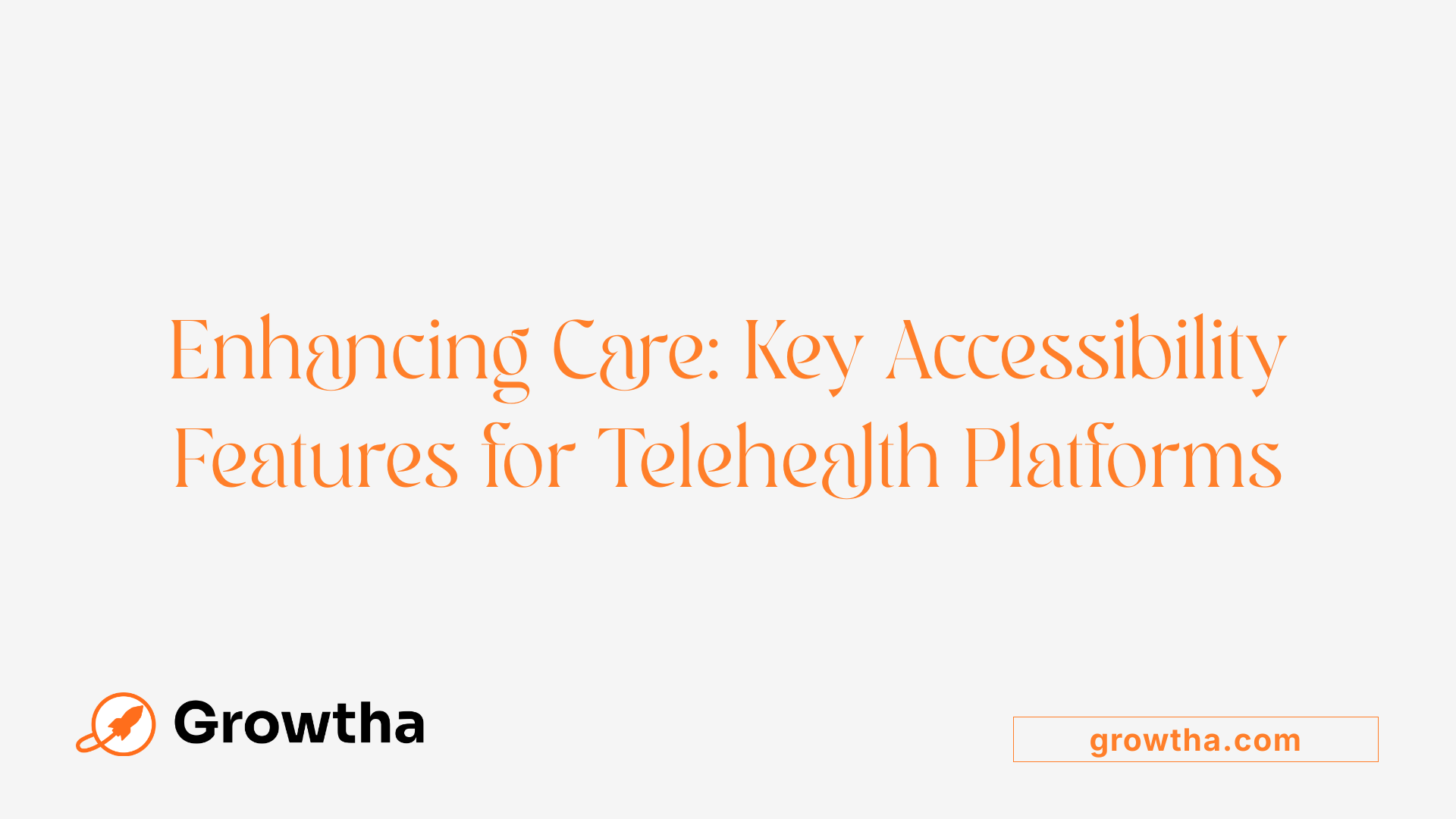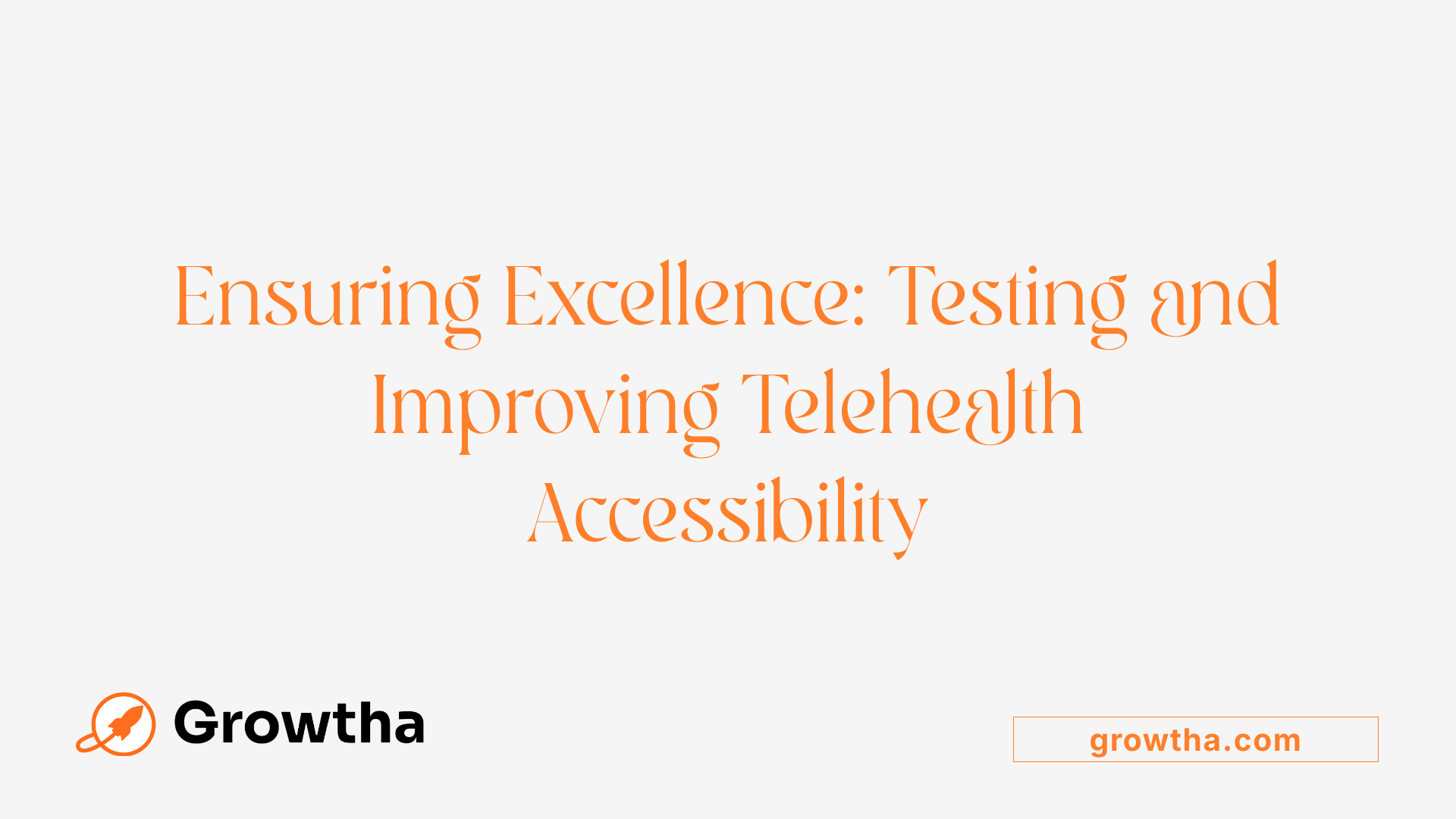Creating Content for Telehealth Accessibility
Enhancing Telehealth for All: Strategies and Innovations in Accessibility


Creating Content for Telehealth Accessibility
Understanding the Importance of Accessible Telehealth Content
In an increasingly digital healthcare landscape, accessible telehealth content is vital for ensuring equity and quality of care for all patients. This article explores best practices, technological solutions, legal standards, and innovative directions that healthcare providers and developers can adopt to create inclusive telehealth environments that meet diverse needs.
Foundations and Legal Standards for Telehealth Accessibility
What legal requirements and standards ensure the accessibility of telehealth services?
Ensuring telehealth services are accessible to all patients involves adherence to several crucial legal standards. At the federal level, the Americans with Disabilities Act (ADA) and Section 504 of the Rehabilitation Act prohibit discrimination based on disability and require healthcare providers to facilitate effective communication with patients who have disabilities. These laws mandate that telehealth platforms incorporate features such as captioning, sign language interpreters, and accessible digital content, ensuring that individuals with visual, auditory, or cognitive impairments can fully participate.
In addition, the Web Content Accessibility Guidelines (WCAG) 2.2, especially Level AA, serve as essential benchmarks for digital content. They guide providers in creating websites, apps, and online documents that support perceivable, operable, understandable, and robust interactions. Meeting WCAG standards involves implementing features like high contrast design, alternative text for images, and keyboard navigation, which benefit not only disabled users but all patients.
HIPAA regulations play a vital role in safeguarding patient information during telehealth activities. Secure transmission, encryption, and protected storage of electronic health data are required to maintain confidentiality and privacy rights.
States also implement specific rules concerning telehealth. These include licensure requirements, informed consent, and prescribing laws. Many states participate in interstate licensure compacts such as the Interstate Medical Licensure Compact (IMLC), which streamline cross-state practice, expanding access while maintaining regulatory standards.
By aligning with these federal laws, standards, and state-level regulations, healthcare providers can deliver telehealth services that are both accessible and compliant. This comprehensive legal framework is essential to eliminate barriers, reduce disparities, and promote equitable healthcare for all individuals, regardless of their physical abilities or geographic location.
Implementing Robust Accessibility Features in Telehealth Platforms

What features and solutions can be implemented to improve accessibility in telehealth services?
Enhancing telehealth accessibility involves integrating a variety of features that cater to the diverse needs of patients with disabilities and other marginalized groups. Core features include real-time captioning, which provides live transcription during virtual visits, ensuring hearing-impaired patients can follow conversations easily.
Sign language interpreters can be facilitated through dedicated channels or integrated video services, offering crucial communication support for deaf users. Transcript options for recordings or live sessions also allow patients to review their consultations at their convenience.
Accessibility is further supported by ensuring compatibility with assistive technologies such as screen readers, which read aloud text and other visual information for users with visual impairments. Platforms should also incorporate adjustable font sizes, high-contrast color schemes, and low-vision tools like magnification to improve readability.
Technical enhancements like keyboard navigation enable patients who cannot use a mouse to interact seamlessly with telehealth interfaces. Clear, straightforward login procedures and notifications comply with accessibility standards and reduce barriers for all users.
The WHO-ITU Global standard for accessible telehealth emphasizes practical design features that promote inclusivity. The implementation toolkit provides additional guidance on deploying these features effectively, emphasizing continuous testing and user feedback.
In addition to technological solutions, establishing policies that support digital equity—such as expanding broadband access and providing training for healthcare providers—ensures underserved populations are not left behind. Regular usability testing with diverse user groups helps identify remaining gaps and refine features.
By aligning with international guidelines like WCAG 2.2 and federal standards such as Section 508, telehealth platforms can deliver comprehensive, accessible care. This not only improves patient satisfaction and health outcomes but also ensures compliance with legal mandates and promotes health equity across communities.
Designing Inclusive and User-Friendly Telehealth Platforms

How can telehealth platforms be designed to be inclusive and user-friendly for diverse patient populations?
To create accessible and easy-to-use telehealth platforms, designers should embrace principles of universal and user-centered design. This includes implementing features such as adjustable text sizes, high-contrast color schemes, and responsive interfaces that adapt seamlessly across different devices like smartphones, tablets, and desktops.
Including alternative communication options is crucial. Features like captions for videos, image alt text, and multiple interaction methods ensure that patients with hearing or vision impairments can access their healthcare effectively. Clear navigation and straightforward instructions help reduce confusion and cognitive load, especially for users unfamiliar with digital technology.
It's vital to consider specific groups such as older adults and people with disabilities. Simplified interfaces with visual cues, larger buttons, and assistive technology compatibility—like screen readers—support their needs. Regular usability testing with diverse user groups can uncover barriers and improve overall platform accessibility.
Adopting these inclusive design practices not only promotes fairness but also enhances the overall experience for all patients. It enables healthcare providers to serve a broader population with confidence, ensuring that no one is left behind in digital healthcare advancement.
Ensuring Compliance and Navigating Policy Landscapes

What legal requirements and standards ensure the accessibility of telehealth services?
Legal frameworks play a crucial role in shaping accessible telehealth. Federal laws such as the Americans with Disabilities Act (ADA) and Section 508 of the Rehabilitation Act prohibit discrimination against individuals with disabilities and require that digital and communication technologies used in healthcare be accessible.
Providers are obligated to make reasonable modifications, including offering sign language interpreters, captioning services, and ensuring digital content is compatible with assistive technologies like screen readers. These accommodations help eliminate barriers for patients with visual, hearing, or cognitive impairments.
HIPAA compliance is also mandatory to safeguard patient health information. This involves encrypting data, ensuring secure transmission channels, and securely storing electronic protected health information (ePHI). These measures ensure confidentiality while maintaining accessibility.
State regulations add further layers of requirements, such as obtaining patient consent, licensure across jurisdictions, and prescribing laws. Many states participate in interstate licensure compacts, like the Interstate Medical Licensure Compact (IMLC), which streamline licensing for providers practicing across state lines.
In summary, telehealth providers must navigate a complex landscape of federal and state legislation to ensure their services are accessible, compliant, and fair for all patients. Proper documentation of compliance efforts and accommodations for communication needs are essential to meet legal standards and promote health equity.
Testing, Evaluation, and Continuous Improvement in Accessibility
 Ensuring telehealth platforms are accessible requires a comprehensive approach to testing and evaluation. Automated testing tools such as Axe, Pa11y, and AudioEye are valuable for quickly identifying common accessibility issues. These tools analyze websites and applications against WCAG 2.1 Level AA standards, checking for problems like poor color contrast, missing alt text, or unlabeled interactive elements.
Ensuring telehealth platforms are accessible requires a comprehensive approach to testing and evaluation. Automated testing tools such as Axe, Pa11y, and AudioEye are valuable for quickly identifying common accessibility issues. These tools analyze websites and applications against WCAG 2.1 Level AA standards, checking for problems like poor color contrast, missing alt text, or unlabeled interactive elements.
However, automated tools alone cannot guarantee full accessibility compliance. Manual testing using assistive technologies is essential. This involves using screen readers, navigating with keyboard-only commands, and inspecting the Document Object Model (DOM) to detect any barriers that might hinder users with disabilities. These steps help verify that multimedia content is captioned or transcribed, forms are properly labeled, and dynamic content updates are accessible through ARIA roles and live regions.
Involving real users with disabilities in usability testing offers valuable insights. Their feedback helps identify practical barriers that automated tools might miss, ensuring the platform meets actual user needs. Regular audits conducted by accessibility experts, combined with iterative feedback from users, create a cycle of continuous improvement.
Balancing accessibility with security is vital. Implementing best practices such as data minimization, transparent encryption, and multi-factor authentication helps protect sensitive health information without compromising ease of access. By combining these strategies, healthcare providers can develop telehealth platforms that are both secure and universally accessible, fostering equitable healthcare for all patients.
The Future of Telehealth Accessibility and Innovation

What are the future directions and innovations in accessible telehealth development?
The future of telehealth promises significant advancements driven by emerging technologies such as artificial intelligence (AI), virtual reality (VR), augmented reality (AR), and blockchain. AI-powered diagnostic tools and virtual assistants will help personalize patient care, making telehealth more responsive and efficient. These innovations can support patients with disabilities by adapting interfaces and communication methods in real-time to meet individual needs.
Interoperability is set to become more seamless, enabling better integration between telemedicine platforms, electronic health records (EHRs), wearable devices, and auxiliary technologies like VR, AR, and blockchain. This interconnectedness will support more comprehensive and secure patient care, allowing clinicians to access accurate health data rapidly and provide tailored treatments.
Addressing infrastructural gaps, especially in rural and underserved regions, remains a priority. Efforts to expand broadband access, improve device availability, and enhance digital literacy will be vital. Alongside policy support and increased funding, these measures will reduce disparities and foster equitable access to telehealth services.
Evolution in service offerings includes remote surgeries, mental health support, chronic disease management, and emergency responses. Remote surgery, utilizing robotic technology, could revolutionize complex procedures, while mental health services will expand via secure, accessible platforms tailored to the needs of diverse populations.
Cybersecurity remains a critical focus, with advancements aimed at protecting sensitive health data against cyber threats. Multilingual support will ensure that telehealth is accessible for non-English speakers and those with limited literacy, promoting inclusivity globally.
Overall, the integration of innovative technologies, expanded service scopes, and a focus on equitable access will shape the next generation of telehealth, making healthcare more accessible, personalized, and secure for all populations.
Moving Forward: Shaping Equitable and Accessible Telehealth Futures
Creating truly accessible telehealth content requires a holistic approach that integrates legal compliance, innovative technology, user-centered design, and ongoing evaluation. Embracing emerging technologies like AI and VR, expanding interoperability, and addressing infrastructural challenges will pave the way towards more inclusive, equitable, and effective virtual healthcare services. Healthcare providers, developers, and policymakers must collaborate to uphold accessibility standards, foster innovation, and ensure that the benefits of telehealth reach everyone, regardless of ability or location. By prioritizing accessibility today, we can build a healthier, more inclusive future for telemedicine.
References
- How to Make Telehealth Services More Accessible for All Patients
- Accessibility Design in Telehealth Care - SimplePractice
- Accessibility and Inclusivity in Telehealth Interface Design - Geneca
- Developing a direct-to-consumer telehealth strategy
- Guide to Digital Accessibility in Healthcare - AudioEye
- A Comprehensive Review on Exploring the Impact of Telemedicine ...
- Making accessible telehealth services for persons with disabilities
- Guidance on Nondiscrimination in Telehealth - HHS.gov







